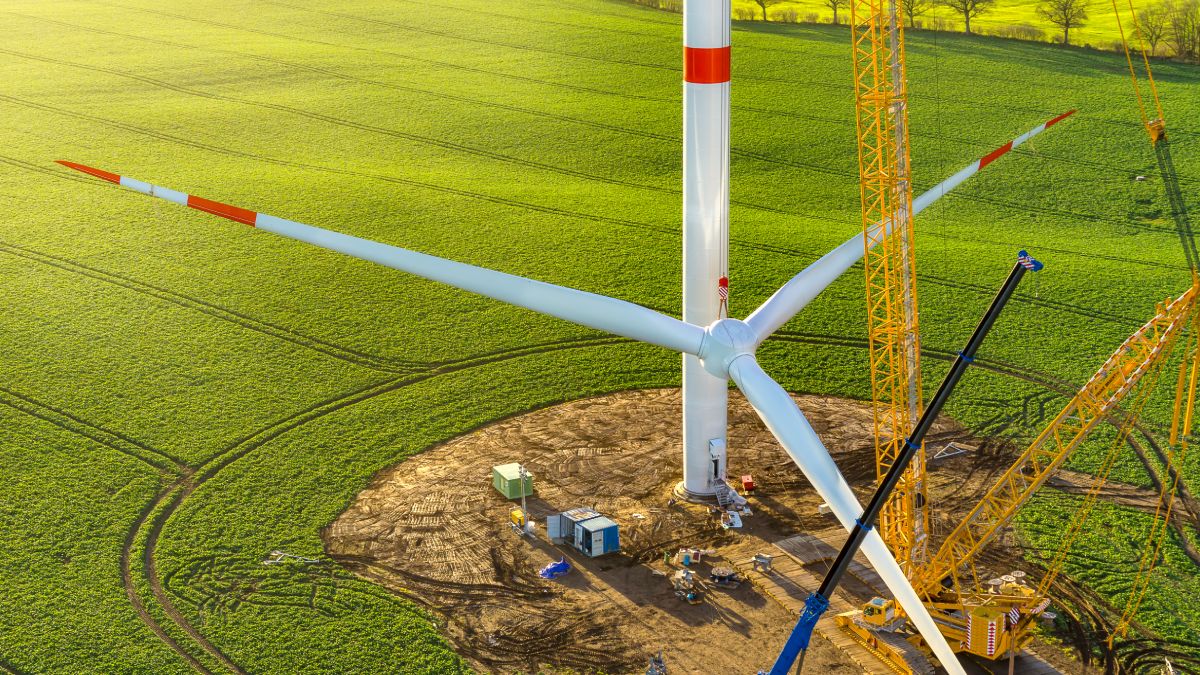ETIPWind’s new European wind energy competitiveness report finds that Europe’s wind industry employed 370,000 and contributed €57bn to Europe’s GDP in 2023

ETIPWind published its new European wind energy competitiveness report. The annual report provides an update on the macroeconomic indicators for the European wind industry in 2023. The indicators include wind energy installations, contribution of wind energy to Europe’s GDP, trade balance, job creation, and research & innovation (R&I) expenditure.
The backbone of Europe’s electricity demand
Wind now meets 20% of Europe’s electricity demand. In Denmark wind accounts for as much as 56% of all electricity consumed. Ireland and Germany get roughly a third of their electricity demand from wind; the UK, Netherlands and Spain more than a fourth each.
As of 2023, Europe had 272 GW of wind energy capacity installed of which 87% was onshore wind. In the EU, there were 220 GW of wind energy capacity of which 91% were onshore wind.
A strategic industry for Europe
Wind energy is central to both Europe’s energy security and industrial strategy. It contributes €57.2bn to Europe’s GDP. €34.5bn of this are direct contributions from developers, manufacturers and components suppliers. The wind industry is also a major European exporter. In 2023 it exported €11bn of goods and services.
Each gigawatt (GW) of onshore wind installed in Europe generated €3.4bn of value to the European economy. Each GW of offshore wind generated €2.8bn. On average that means that each new onshore turbine added €15m to the European economy and every new offshore turbine added €27m of economic activity.
Finally, the EU wind industry has increased investments in R&I for the second consecutive year. In 2023 the wind industry made investments worth 3.79% of its contribution to GDP in R&I. The wind industry consistently outperforms the average EU R&I investments.
The environmental, economic, and social value of wind
Wind energy also brings value to the European citizens. In 2023 the European wind energy sustained 370,000 jobs. The number of people employed in the industry has increased for the second year in a row, after three years of stagnation during the COVID-19 and energy crises in Europe. In comparison, the wind industry employed 247,000 people 10 years ago.
In addition, wind farms bring local tax revenues and other economic benefits. The wind industry contributed €10bn in taxes to the local governments and communities where turbines are located.
When it comes to the environmental benefits, wind energy generation avoided 139 million tons of CO2 in Europe. This is equivalent to avoided costs of €11.6bn, calculated based on the average price of EU emission allowances in 2023 of €83/tCO2.
More investments in R&I needed
To reach the 42.5% renewable energy target by 2030 the EU must install 30 GW of wind energy per year, up from 17 GW today. The ETIPWind competitiveness report shows that this target is within reach. But R&I investments will be crucial to accelerate wind energy deployment in Europe.
In 2023 the wind industry invested the equivalent of 3.8% of its GDP contribution in R&I activities. Which means that the wind industry remains to outperform the EU objective to have 3% of its GDP contribution dedicated to R&I activities by 2030.
But this should be combined with targeted public investments. In their latest Strategic R&I Agenda, ETIPWind experts estimate that the sector needs €1.8bn of public investment support in wind R&I between 2025 and 2027.
For more information, please contact the ETIPWind Secretariat: [email protected]
